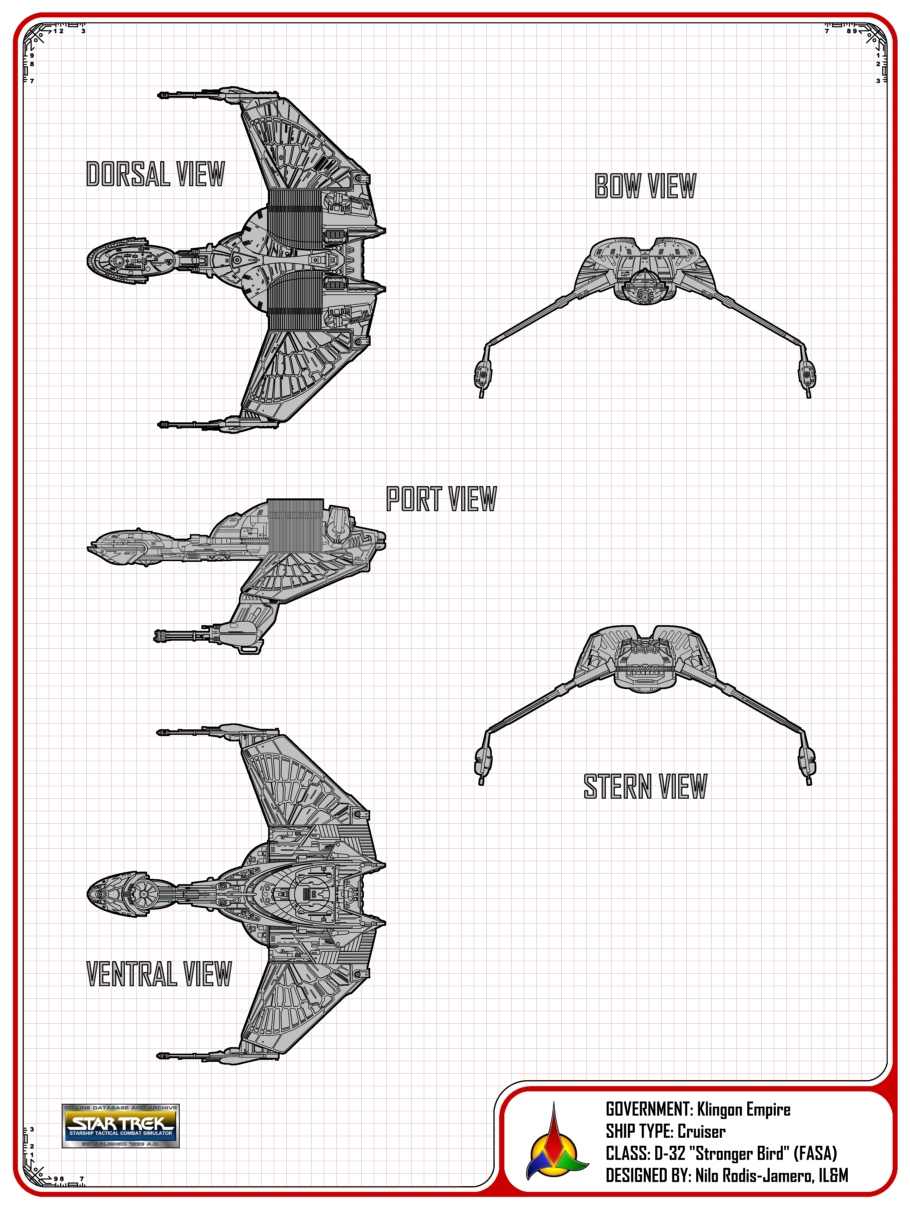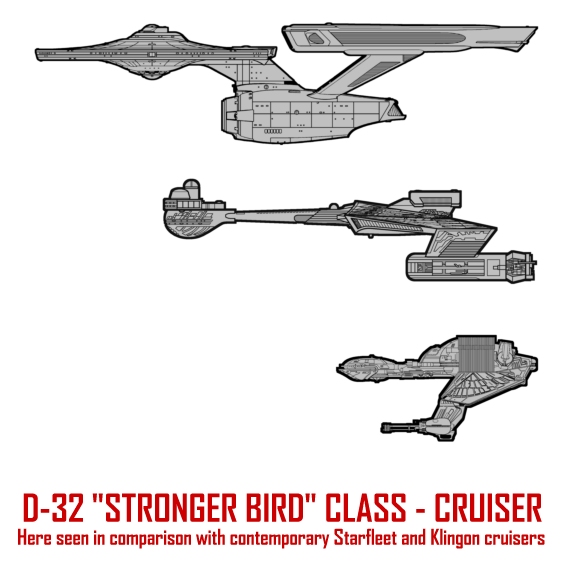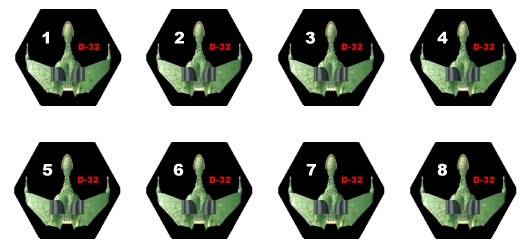|
WHEN THE BIRD OF PREY FIRST APPEARED
in Star Trek III under the command of the
semi-renegade Commander Kruge (portrayed masterfully by Christopher Lloyd, an
actor more known for his comedic talent than his dramatic flair) nobody had any
idea how much screen time this design would ultimately get. So much screen time, in
fact, that the 'Bird of Prey' is now more identified with the Klingons than even
the D7 ship. The design has been seen or
featured in 5 motion pictures and countless episodes of ST:TNG and ST:DS9.
But . . . .
In a strange working of fate, the
history of the FASA 'Bird of Prey' is actually pretty close to that of official
Trek canon. M. Okuda's Star Trek Encyclopedia from 1994 states that there
are at least two types of this ship, a "B'rel" class scout sized craft
and a "K'Vort" class cruiser sized ship. And while the three
ships in the Klingon Ship Recognition Manual don't go under these Klingonese names, there is a scout and a cruiser, and even a frigate-type ship
with the exact same design. Also, an early draft of Star Trek III had
Kruge stealing his ship from the Romulans, which semi-jives with the FASA
history wherein the "Bird of Prey" class is the result of Romulan/Klingon
technology exchange. And although a Romulan connection has been officially
dropped, it does somewhat confirm the writing of the original FASA manual.
In terms of game play, the D-32
cruiser is a competent ship, with a good balance of offensive and defensive
equipment. Its most valuable asset is, of course, the cloaking
device. The cloaking device sucks power like crazy, but enables the ship
to operate with almost total impunity across the starfield map, and makes the
D-32 a lethal sneak attack weapon. Combined with the other two "Bird
of Prey" derivative ships (L-42, and
K-22) the D-32 is a lot of fun to play and makes for
interesting gaming sessions.
For the sake of keeping this ship
current with its smaller (and larger) "Bird of Prey" brothers, I have created an
extra range of stats which take the class past the time of Kirk and into the
murky period between Star Trek VI and ST:TNG. The "Bird of
Prey" is ubiquitous throughout Klingon space, in a variety of incarnations, so I
thought it only fitting that all of these craft be playable in a time far
advanced from that of Star Trek III.
— BRT

From the FASA Star Trek KLINGON SHIP RECOGNITION MANUAL, circa 1985
D-32 (Stronger Bird) Class VII-VIII Cruiser
Known Sphere Of Operation: Empire-wide
use
Data Reliability: C for D-32B; D for D-32C
Major Data Source: Klingon Sector Intelligence, Operation Dixie
The D-32 is one of the newest ships in the Klingon Imperial Navy, the direct
result of the latest Klingon-Romulan technology exchange. On Stardate,2/1801, as
part of their arrangement, the Romulans supplied the Klingons with seven S-11
Class V scoutships and the plans to construct them. The Klingons had supplied
some of the technology and design for the Romulan S- I 1 in the first place, and
they were eager to begin construction of these vessels. In fact, they had been
secretly planning to produce not only scouts but to enlarge the design to a
cruiser and frigate model. While the negotiations were in session, the Klingons
were tooling up and producing the pieces for the larger ships, and the
compartment that would house the warp and impulse drive systems along with the
central wing adjustment mechanism were in production when the treaty was signed.
The
most interesting aspect of the S-11 design is the movable wings, which are
positioned straight out for normal cruise, down for attack, and up for
atmospheric operation. In the attack mode, the ship presents a smaller target
and the disruptors mounted at the wingtips have a better field of fire. In the
atmospheric-flight mode, the wings take advantage of the aerodynamic design of
the ship, and, in the cruise mode, the wings create a more structurally-sound
design that can withstand the forces of high warp speeds. The D-32 design
incorporated these features.
The
first cruiser model, the D-32A, lacked the maneuverability that the Klingons
desired and was modified immediately to the D-32B, the first of which was
commissioned on Stardate 2/2004, only 18 months after the first S-11s were
received. The ship mounts a very powerful impulse drive system that delivers 40%
of the total maneuver power and gives the ship its ability to perform
atmospheric operations. The weaponry is the standard mixture of disruptors and
photon torpedoes; the disruptors cover all fields of fire, and the photon
torpedoes are mounted both fore and aft.
The
D-32C is reported to have a Romulan plasma weapon of the RPL-1 type instead of
the forward-firing photon bay. It also reputedly uses the KSK shielding system,
which is slightly more efficient than KSD installed on the D-32B, and the
superstructure is thought to be stronger. The KCC Klingon cloaking device is
used on both models, but it should prove more effective on the 0-32C because of
the plasma bolt weaponry.
Of
the 40 D-32s built, 39 remain in active service and 1 has been destroyed.
Information obtained from Operation Dixie revealed that the class is produced at
H'renn. Undocumented information suggests that Mustaka is being tooled up for
production of these vessels.
The
class name is from the Klingon z'gavva, which translates to "stronger
bird'.
|




